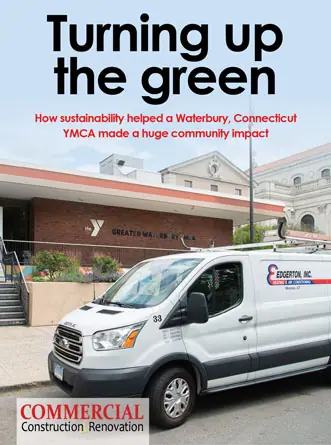
Today’s built environment generates nearly 50% of annual global carbon emissions, with 20% of the total accredited to building materials and construction, according to Architecture 2030. In turn, architects and developers are sourcing energy-efficient, carbon-neutral designs, including exterior cladding.
With a building’s facade making up the majority of its envelope, global surfacing leader Cosentino have insights into why sustainable surfacing materials like Dekton are swiftly becoming the premier facade material specified by those developing today’s climate-positive buildings.
-
Say Goodbye to Glass“For decades, glass has been the focus for commercial facades,” says Brendan Mercier, Cosentino Facades Manager. “However, all-glass designs are losing popularity due to extreme energy-inefficiencies – glass leaks heat in the cold and turns buildings into greenhouses in high temperatures. Unlike glass, solid surfaces like Dekton are UV- and frost-resistant, helping to regulate the temperature inside and outside.”
-
Future-Proof w/ Ventilated Facade Systems“Unlike traditional facade systems, ventilated facades are multi-layered structural solutions which enable ‘dry’ installation of cladding,” notes Cosentino Regional Facades Sales Manager Natasha Appel. “These systems offer an air space between the wall and the cladding, creating a chimney effect to provide effective natural ventilation and offer significant advantages in removing heat and moisture. Match these systems with a carbon-neutral material like Dekton, and you’re not only saving on energy and lowering the building’s overall carbon footprint, but also future-proofing the building with the extremely long-lasting material that is maintenance-free.”
-
Climate Crisis & Government Regulations“New building codes and regulations, like the Better Building Initiative are sweeping across the country to mitigate climate change,” adds Cosentino Facades Manager Brendan Mercier. “With these new regulations and environmental considerations taking priority in new and renovating buildings, specifiers are hunting for more energy-efficient, climate-friendly materials that are LEED and BREEAM accredited.”








 The 2024 virtual Men’s Round Table will be held Q4, 2024, date TBD.
The 2024 virtual Men’s Round Table will be held Q4, 2024, date TBD.












